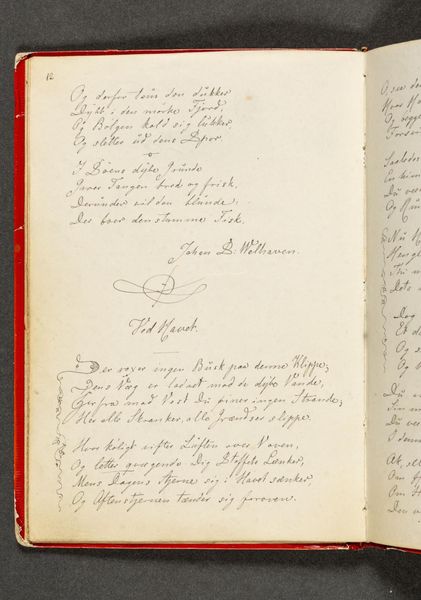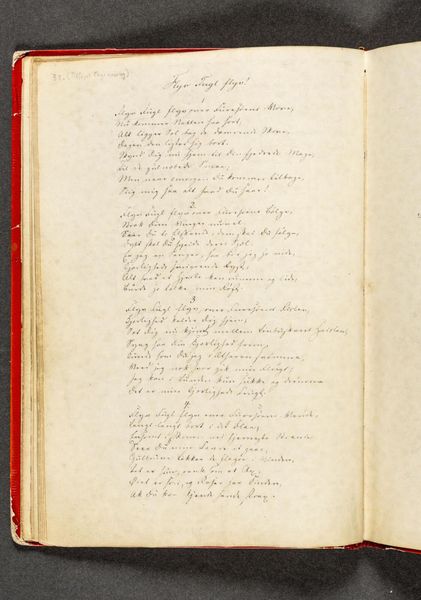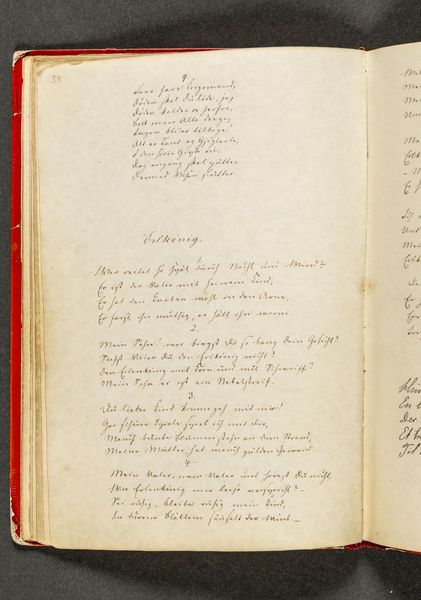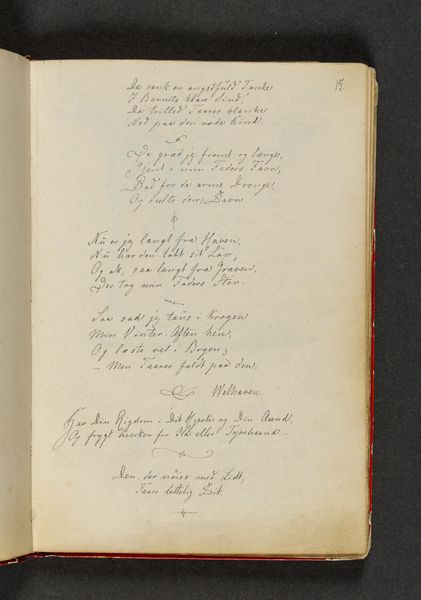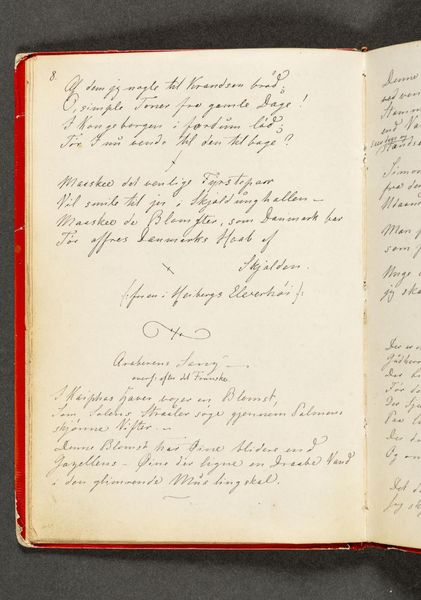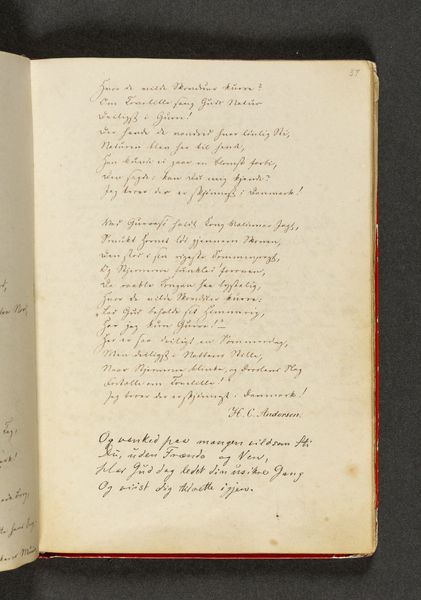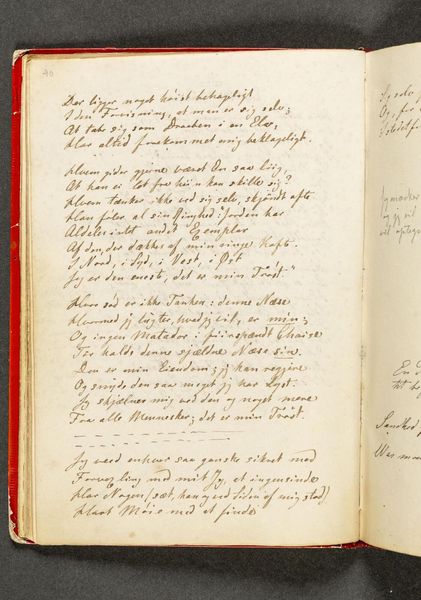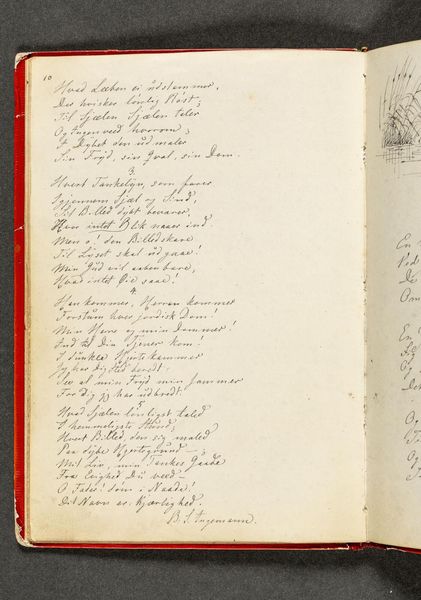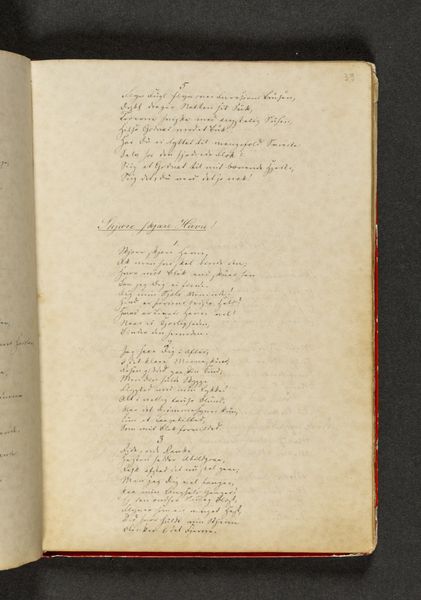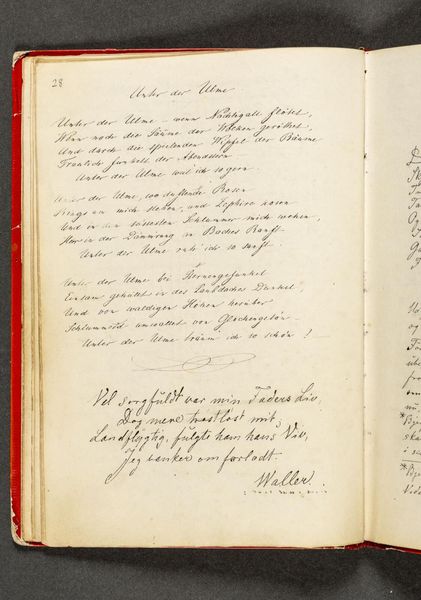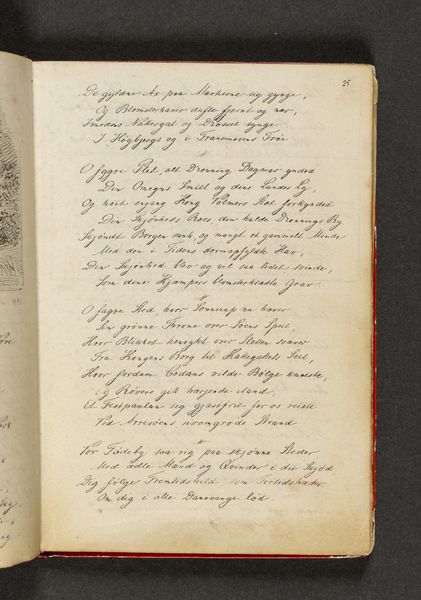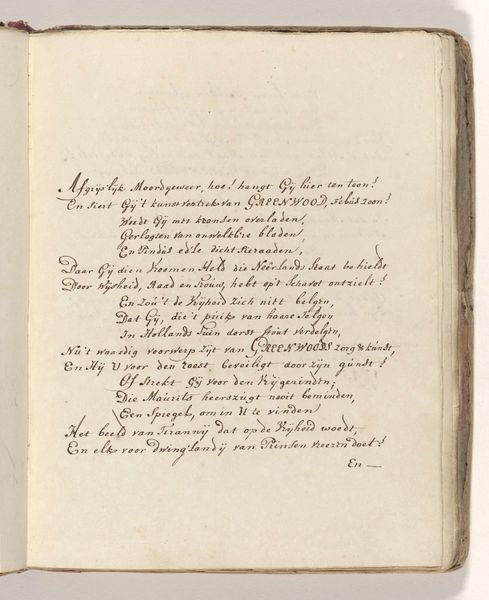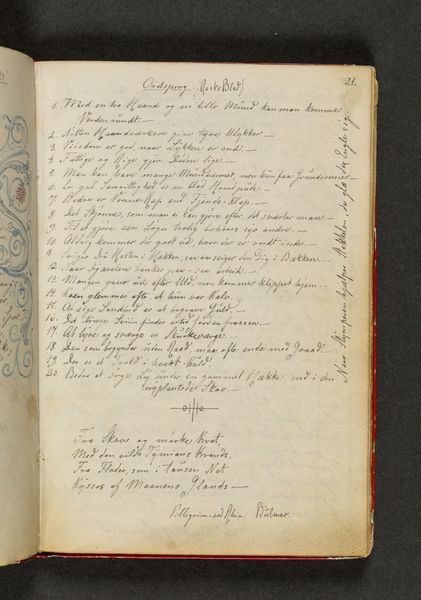
drawing, textile, paper
#
drawing
#
textile
#
paper
#
romanticism
Dimensions: 192 mm (height) x 133 mm (width) (bladmaal)
Editor: So, this is “Vers. Side 14,” created by Johan Thomas Lundbye between 1840 and 1844. It’s a drawing in a book, using paper and textile. I’m struck by how intimate it feels, like a peek into a personal journal. What kind of stories do you see woven into these handwritten words? Curator: Well, first, notice how the handwriting itself functions as a powerful visual symbol. It's not just the words, but the script, the slant, the pressure of the pen. Consider handwriting as a "cultural artifact". Do you sense the human presence, the *hand* that created this? The Romantic era was intensely concerned with emotions and nature. This particular text seems to be some sort of melancholic poem. Editor: Yes, I can almost feel the writer’s presence. There's a fragility to it. How does knowing this is from the Romantic period shape your understanding? Curator: Think about what else was happening at that time. This was a period embracing folklore and national identity, with heightened awareness of cultural history. Consider, then, that handwriting styles could be seen as symbolic of cultural or national identity. Notice those particular flourishes or curves—they echo familiar themes? Editor: That’s interesting, I hadn’t thought of the script itself carrying meaning. It feels like there's so much more than just the literal words here. Curator: Exactly. We must delve deeper into its visual language and historical context to unveil cultural memories and continuity it transmits. It’s an invitation to decode the personal within a broader cultural tapestry, don't you agree? Editor: I absolutely agree. I'm starting to see how this piece, beyond just being words on a page, is a vessel of cultural meaning and personal expression intertwined.
Comments
No comments
Be the first to comment and join the conversation on the ultimate creative platform.
